‘Dagr’ Review: There’s a Lot to Like About this Found Footage Chiller
Dagr hits many of the expected beats of the found-footage format, but its unique structure helps make it stand out as something special.

Table of Contents
What is Dagr About?
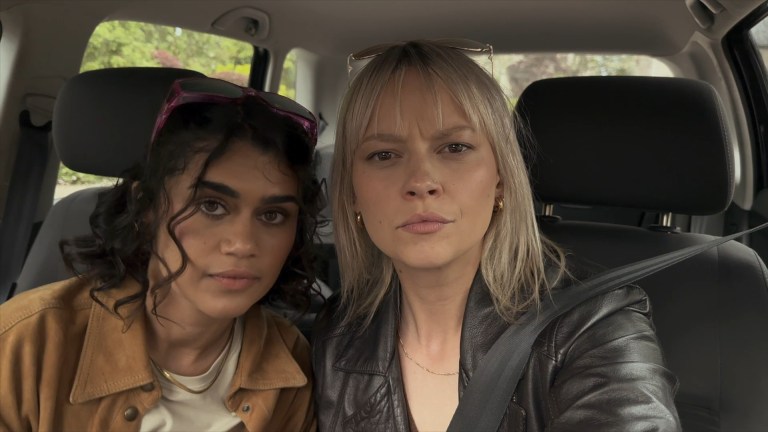
Dagr is a found footage movie about the supernatural and cult happenings at an isolated mansion in South Wales. Text at the beginning of the film indicates that the footage we are about to see was found by police as part of an ongoing homicide investigation. Professional editors were given access to the footage to make the movie we are currently watching.
Dagr primarily follows friends Thea and Louise, a duo of social media stars who make videos that are ostensibly about various kinds of activism. In the first few minutes of Dagr we see the pair spraying anti-milk graffiti at what appears to be a dairy farm, and “repatriating” an antique vase from a mansion. For their next video, Thea and Louise are planning a heist. They will pose as caterers for a commercial shoot at a mansion, but once they get inside they’ll just steal as much expensive stuff as they can find. Their stated intention is to steal from the rich and give to the poor, though whether they intend to follow through on that promise is unclear.

Meanwhile, as Thea and Louise make their way to the house where the commercial shoot is taking place, the commercial’s small cast and crew have already begun filming. Strange things eventually begin happening in the house, and the crew is nowhere to be found as Thea and Louise arrive. From there, Dagr becomes exactly what you might expect from a found-footage movie: spooky noises, an encroaching sense of dread, and an escalation of fear and violence as everyone in the house becomes the target of a mysterious presence.
Dagr Review
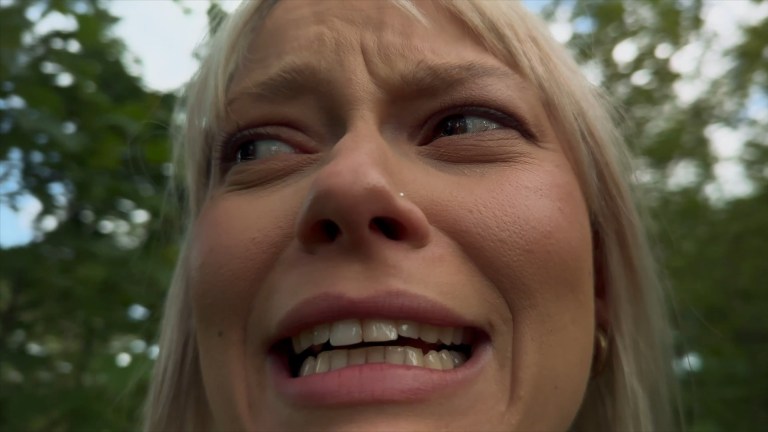
The prevalence of social media in modern society is a double-edged sword when it comes to found footage horror. For the better, it gives an easy and plausible excuse for why everyone in a found footage movie has a camera pointed at everything at all times. For the worse, it can often lead to obnoxious lead characters. That’s not to say all real-life social media personalities are obnoxious. That’s not true at all. But, a fair number of modern found footage movies with influencers, streamers, and social media stars as the lead characters do suffer from the protagonists always being “on” and in performance mode when they know they are being recorded. Their actions and reactions don’t always feel natural, and that can hurt the horror aspects of the story. Dagr comes precariously close to this trap in the first half of the movie.
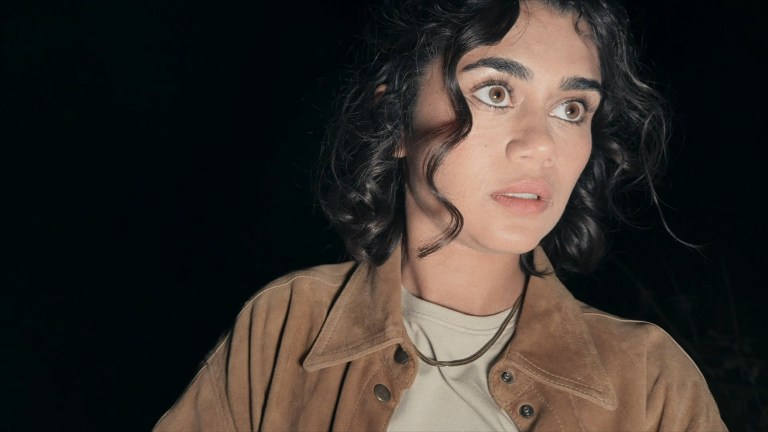
As we get to know them in the first half of Dagr, Thea and Louise are both playing it up for the various cameras they have all around them. Thea in particular comes across as either disingenuous or simply starved for attention and acting out. Louise has a more natural demeanor, going in and out of her on-camera social media personality as the situation around her changes. Now, none of this is to say that the characterizations of the two main characters are bad. They’re actually quite good, and the increasing differences in their personalities as the spookiness begins to happen is one of the biggest strengths of Dagr. This is just more of a heads-up. If you were annoyed by the lead characters in movies like Dashcam (2021) and Deadstream (2022), then the first forty-something minutes of Dagr might be a chore.
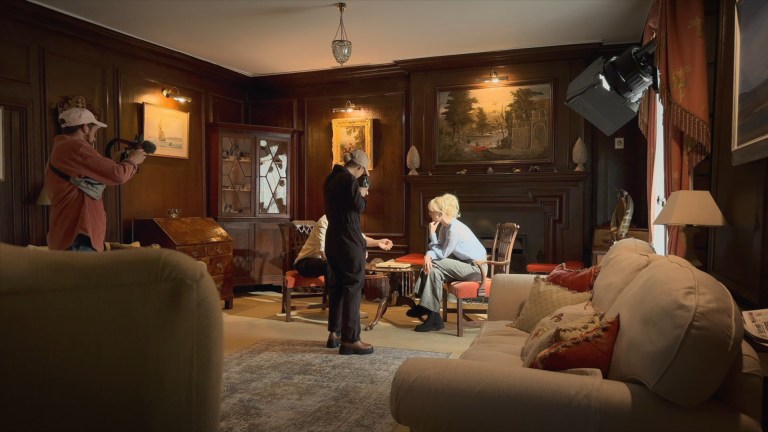
On the flip side are the cast and crew of the commercial being shot in the house. Though we don’t get to know them quite as well as Thea and Louise, the ill-fated commercial shoot is quite amusing. The director, Tori, has to put up with poor communication among the three-person crew, and she has to deal with two actors who feel the need to repeatedly stop filming and discuss their characters through the lens of modern society’s expectations. Tori’s exasperation is a sub-plot that ultimately doesn’t lead to much significance, but it’s fun to watch.

Beyond the characters, a hurdle for some viewers will be the pacing of Dagr. The film is only about 76 minutes total, and it’s over halfway over before there ever feels like anything truly dangerous is happening. Overall it feels like the first forty minutes are too leisurely paced which doesn’t leave a ton of time to build tension in the latter portions of the film. Many found footage movies take a similar approach, but most of them use the quieter first half to provide lots of exposition and lore for what we can expect later. There is some world building in Dagr, but not a lot. A cult is mentioned and a couple of old posters in a pub hint at a local history of witches and devils, but that’s nearly all the lore we get until much later in the film. The rest of our time in the earlier scenes is spent just hanging out with the characters as they go about their day.
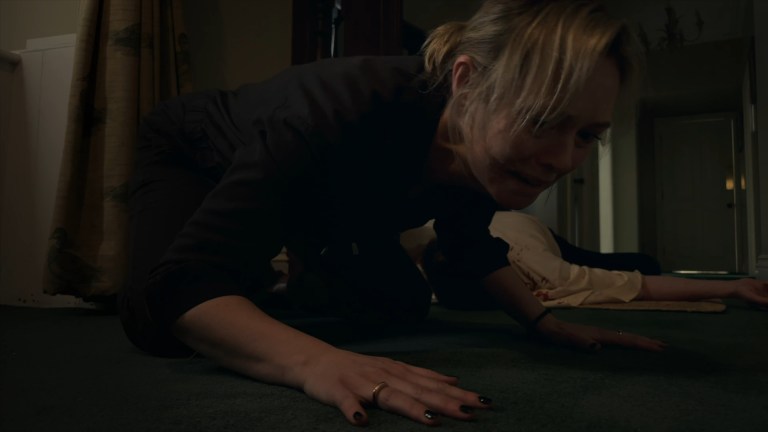
When the scary stuff finally begins, it’s mostly well done. We hear noises and see fleeting images of figures in the house. There’s a lot of screaming and running as you’d expect, but it’s not constant enough to put off people who are averse to “shaky cam.” It’s somewhat standard for a found footage movie, but it’s good. To nitpick though, there are a number of shots that line up too perfectly to feel natural. A phone camera on a stick is dropped and somehow lands and balances on its side so as to get a view of a person’s face, or a handheld camera is randomly placed in the exact right position to see a perfectly framed image of a person in a mirror… twice. That sort of thing. But found footage is rampant with shots like that, so it’s totally forgivable. The cumulative scares are good, and it’s worth sticking around until the end of the movie for the finale.
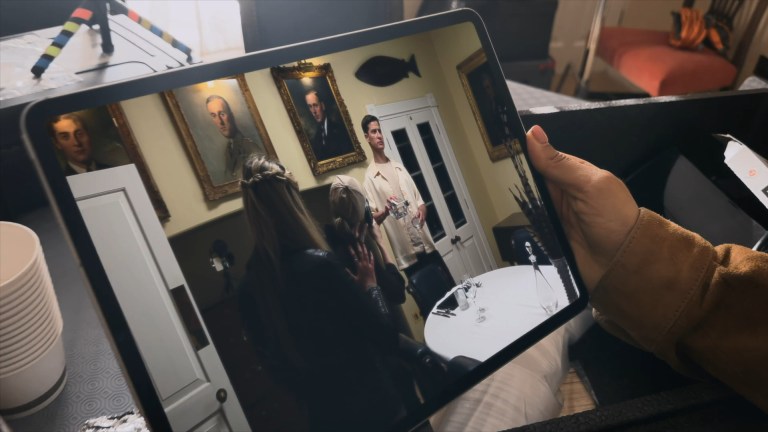
Ending on a huge positive, the structure of the plot is very clever. The best way to describe it is that Dagr‘s structure is like a found footage version of Inception. The two main plot threads—Thea and Louise driving to the house, and the commercial being filmed—occur simultaneously in the beginning. Then, at a certain point we start following the tandem of Thea and Louise more. They discover a tablet in the house through which they watch footage that the commercial crew shot, and even later the commercial crew finds a video tape that they watch while Thea and Louise are watching them. It’s three-level-deep found footage, and it’s great! The best part is that it doesn’t feel gimmicky. The transitions into and out of the different layers happen naturally without taking you out of the movie. It’s extremely well done and is probably the best part of Dagr.
Who Will Enjoy Dagr?
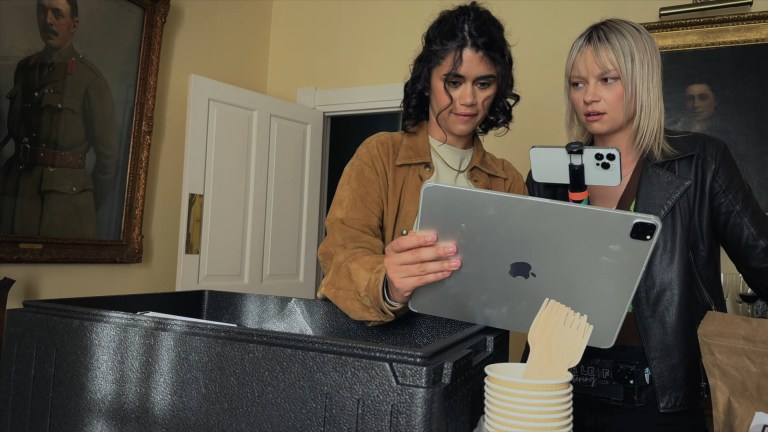
Fans of found footage who like the tropes of the format will enjoy Dagr the most. It will be hit or miss for viewers with only a casual interest in found footage. The characters of Thea and Louise will likely grow on you as the plot unfolds, and they are both played wonderfully by Ellie Duckles and Riz Moritz respectively. Even so, there isn’t a lot of emotional attachment built into many of the characters, so the final act’s moments of horror never reach anything truly frightening. There are a few nice scares though, and the finale is good, so if you’re just looking for a quick, well-made found footage movie to watch, Dagr is an easy recommendation.
Dagr is currently streaming on as a video-on-demand rental on site including Prime Video.
